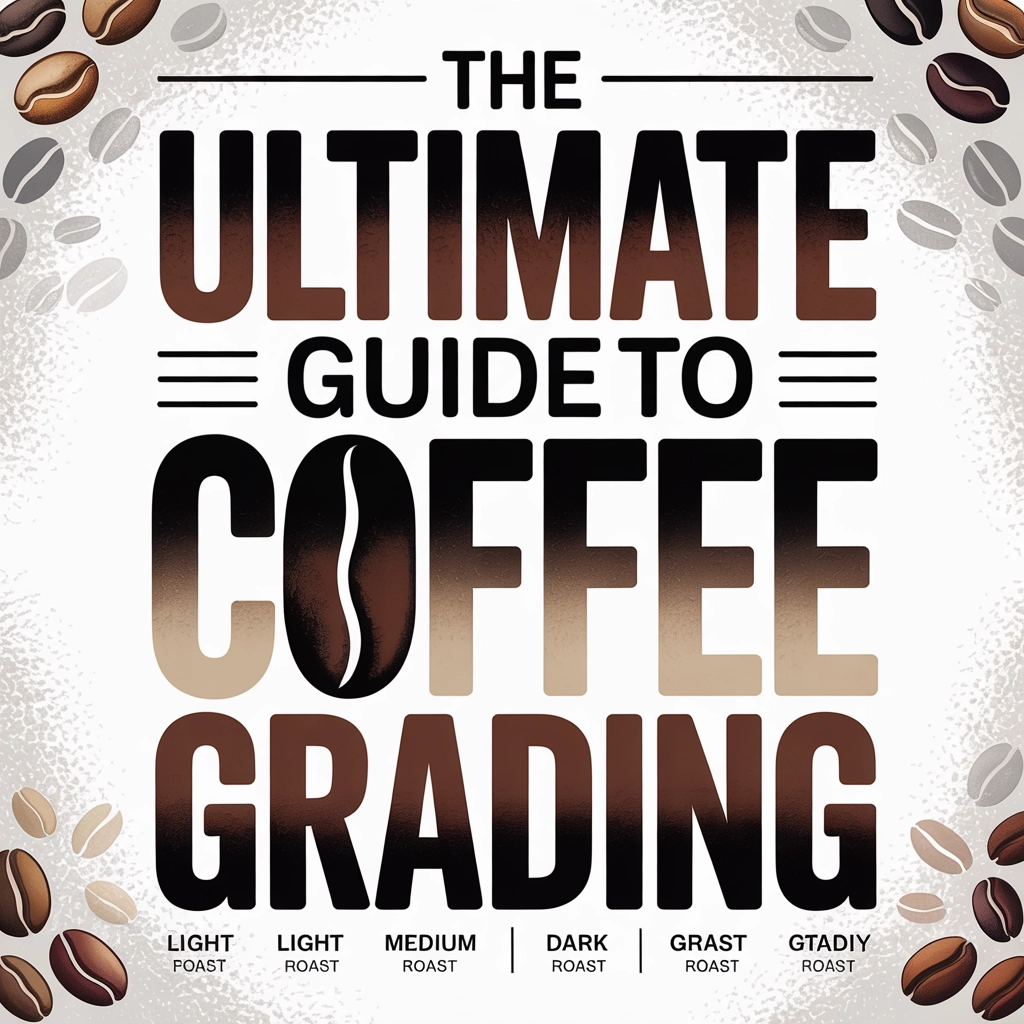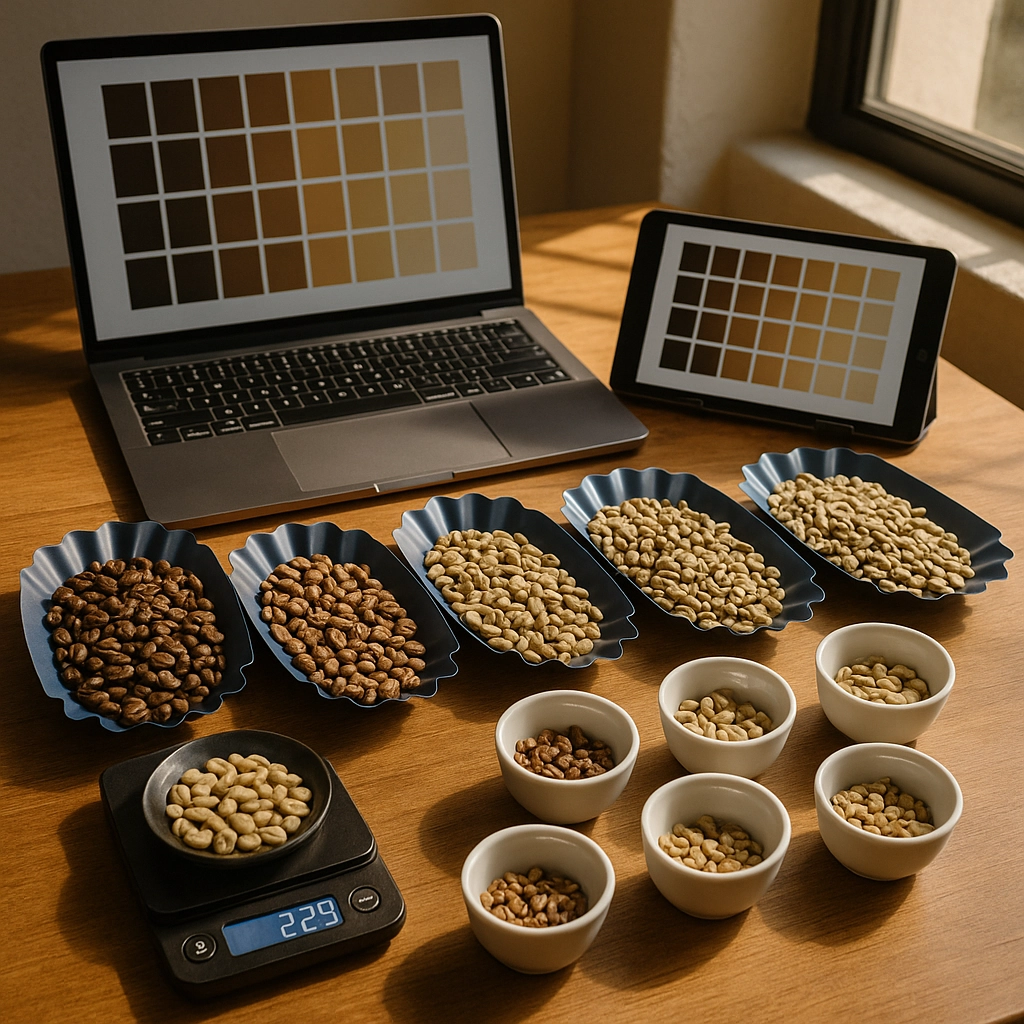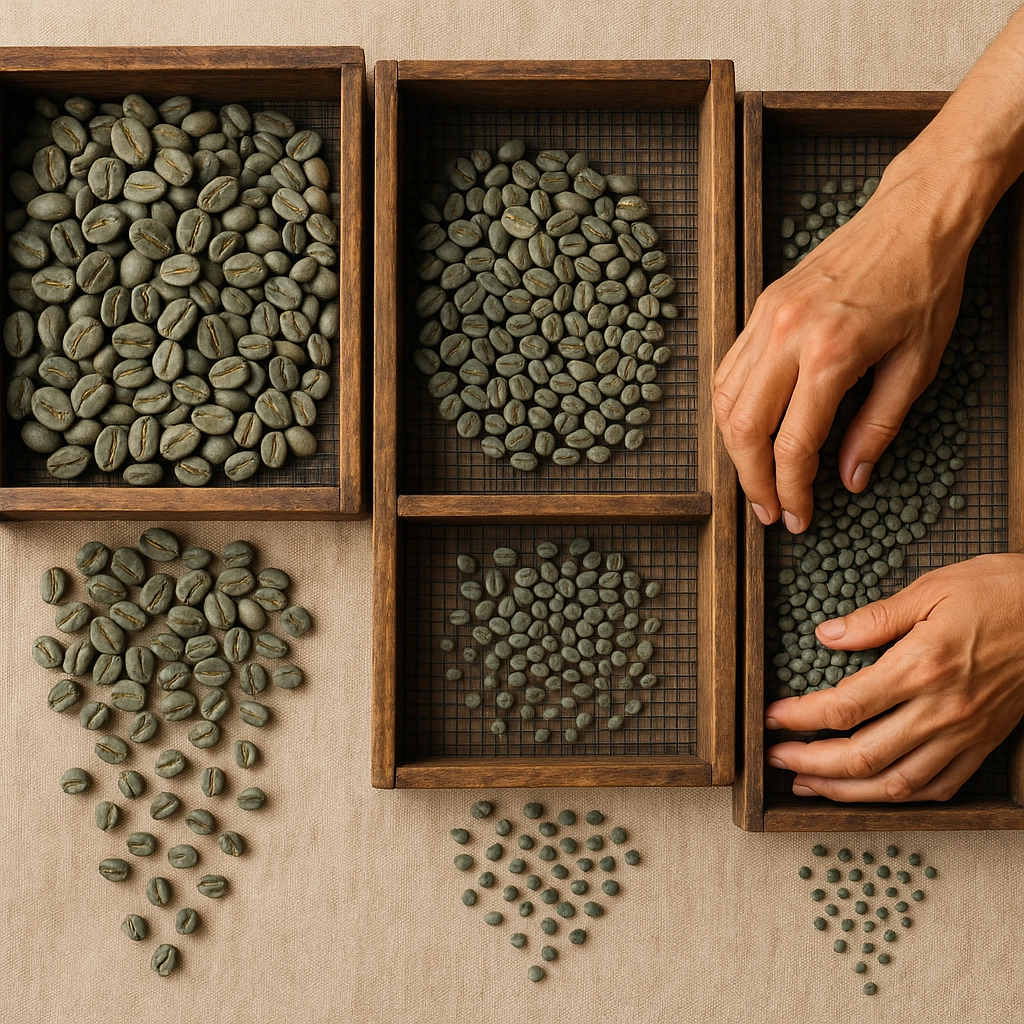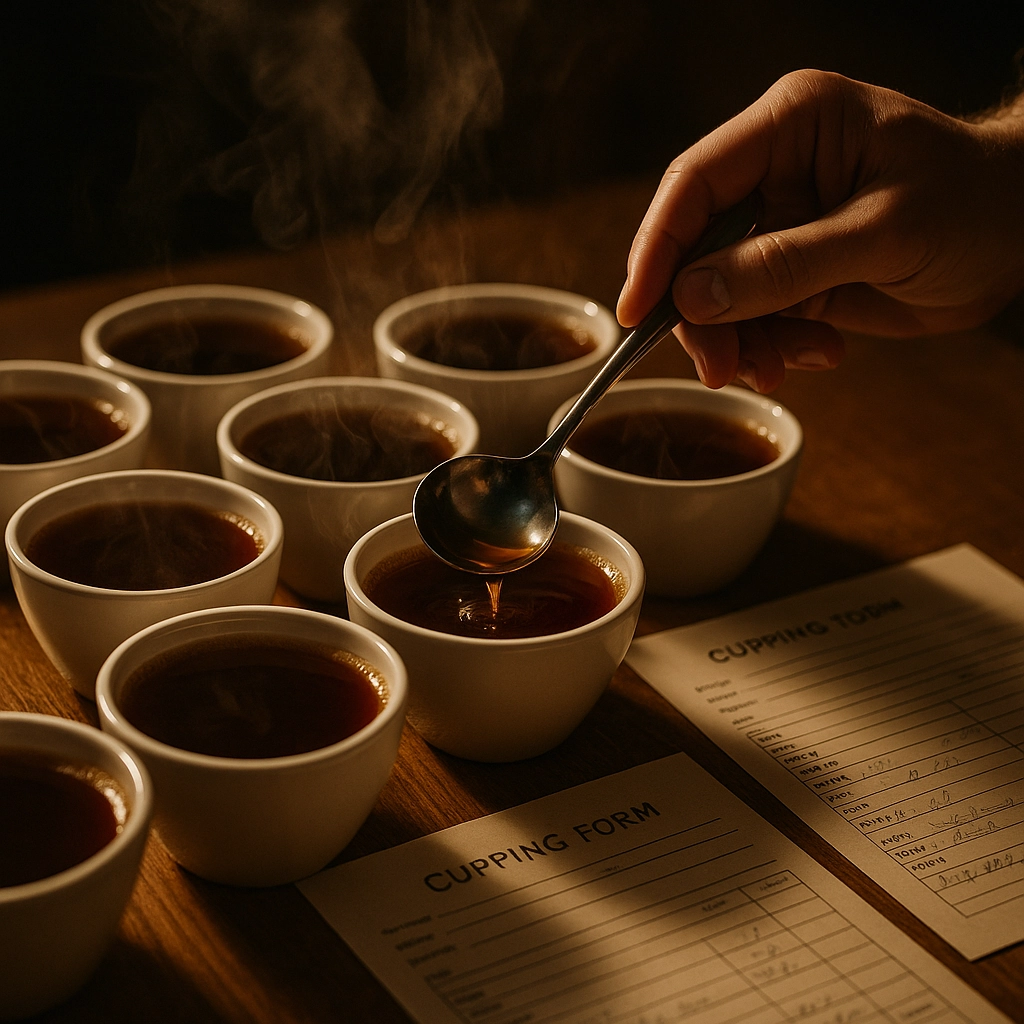The Ultimate Guide to Coffee Grading

Ever wondered why some coffee costs $8 a pound while others fetch $25 or more? The answer often lies in coffee grading—a comprehensive system that separates the exceptional from the ordinary. At Carolina Coffee Works, we're obsessed with quality, and understanding these grading systems helps us source the best beans possible for your morning cup. Let's dive into the fascinating world of coffee classification that shapes everything from price to flavor profile.
What Is Coffee Grading?
Coffee grading is essentially a quality control system that evaluates beans based on specific attributes before they reach your cup. Think of it as coffee's report card—covering everything from physical appearance to taste profile.
Unlike wine or whiskey, coffee doesn't have a single, universal grading system. Instead, producing countries have developed their own standards, though the specialty coffee industry has worked to create more standardized approaches.
The Specialty Coffee Association (SCA) System
The most widely recognized system in specialty coffee comes from the Specialty Coffee Association (SCA, formerly SCAA). This comprehensive approach uses a 100-point scale that evaluates beans through both physical inspection and sensory analysis.
The SCA Scale Breakdown:
-
Specialty Grade (80-100 points): The cream of the crop. These beans have distinct flavor characteristics, minimal defects (no more than 5 per 300g sample), and cup scores of 80+. This is what you'll find in our single-origin offerings.
-
Premium Grade (70-79 points): High-quality beans with good flavor profiles and few defects (maximum 8 per 300g). These often make excellent daily drinkers.
-
Exchange Grade (60-69 points): Standard commercial-quality coffee with acceptable flavor but more defects.
-
Below Standard (50-59 points): Noticeable defects and underwhelming flavor complexity.
-
Off Grade (below 50 points): Significant defects and unsuitable for specialty markets.

Understanding Defects
Defects play a crucial role in grading and fall into two categories:
Primary Defects
These are serious flaws that significantly impact flavor:
- Full black beans
- Sour/fermented beans
- Fungus-damaged beans
- Foreign material (stones, sticks)
- Severe insect damage
Secondary Defects
Less severe but still noteworthy:
- Partial black beans
- Parchment (paper-like covering not removed)
- Broken/chipped beans
- Slight insect damage
- Shell beans (malformed)
A Q Grader (coffee's equivalent of a sommelier) meticulously counts these defects in a sample—typically 300g for high-grade coffee or 100g for lower grades. The number and type of defects directly impact the final grade.
Regional Grading Systems
Coffee-producing regions have developed their own classification methods that reflect local growing conditions and traditions. Here's how some major origins grade their beans:
Colombia
The Colombian system focuses primarily on bean size:
- Supremo: Largest beans, screen size 17/18 (approximately 7mm)
- Excelso: Medium-sized beans, screen size 15/16
- UGQ (Usual Good Quality): Standard export quality
Kenya
Kenya's auction-based system combines size grading with cup quality:
- Kenya AA: Largest beans, screen size 17/18
- Kenya AB: Medium beans, screen size 15/16
- Kenya PB: Peaberry beans (single seed inside cherry)
- Kenya E, T, TT: Smaller grades
The famous Kenya AA doesn't automatically mean better taste—it's just a size classification, though larger beans often develop more complex flavors when roasted properly.
Ethiopia
Ethiopia uses a numerical system from 1-9 that considers both physical and cup quality:
- Grade 1-2: Specialty coffee with minimal defects
- Grade 3-4: Commercial specialty
- Grade 5-9: Commercial grade with increasing defect counts
Brazil
Brazil's system focuses on defect counting:
- Type 2: Extremely clean (4 defects max per 300g)
- Type 3-4: Good quality (12-26 defects)
- Type 5-8: Commercial grade with increasing defects
At Carolina Coffee Works, we primarily source specialty-grade coffees that meet the highest standards across these various systems.
Physical Factors in Grading
Bean Size
Size matters, but not always how you might think. Larger beans aren't automatically better, but size uniformity is crucial for even roasting. Beans are measured using screens with specific-sized holes (measured in 1/64th of an inch):
- Screen 20: 8mm diameter
- Screen 18: 7mm diameter
- Screen 16: 6.5mm diameter
- Screen 14: 5.5mm diameter
Specialty coffee typically ranges from screen 15-20, with some renowned varieties like Jamaica Blue Mountain requiring specific size classifications.

Density
High-density beans are prized for their potential flavor development. Density correlates with growing altitude—higher elevations produce denser beans with more complex flavor compounds. Density is measured through:
- Water flotation tests (denser beans sink)
- Weight-to-volume ratios
- Specialized density meters
Moisture Content
Proper moisture levels (10-12%) are critical for:
- Storage stability
- Even roasting
- Flavor development
Too dry (below 9%) and beans become brittle; too wet (above 12.5%) and they risk mold development.
The Sensory Side: Cupping and Scoring
Physical grading only tells part of the story. The true test comes through professional cupping—a standardized tasting method that evaluates:
- Fragrance/Aroma: The smell of grounds and brewed coffee
- Flavor: The main taste characteristics
- Aftertaste: Lingering flavors after swallowing
- Acidity: The brightness or tanginess (not sourness)
- Body: The tactile feeling and weight in the mouth
- Balance: How well attributes complement each other
- Uniformity: Consistency across multiple cups
- Clean Cup: Absence of negative flavors
- Sweetness: Natural sugar-like qualities
- Overall: The cupper's subjective impression
Each category receives a score from 6-10, totaling the famous 100-point scale. Q Graders undergo rigorous training and certification to develop calibrated palates for this evaluation.

What Coffee Grades Mean For You
As a coffee lover, understanding grades helps you make informed purchasing decisions:
Specialty Grade (80+ points): Worth the premium price for unique flavor experiences. These coffees express distinct terroir and processing methods. Our Ethiopian offerings exemplify these exceptional characteristics.
Premium Grade (70-79 points): Excellent daily drinkers with good flavor but less distinctiveness. Great value for quality-conscious consumers.
Commercial Grade (below 70): Found in grocery store brands and mass-market products. Consistent but often lacks character.
At Carolina Coffee Works, we focus on specialty and premium grades because we believe coffee should be an experience, not just caffeine delivery. Our small-batch roasting approach helps preserve the distinct qualities that make these high-grade coffees special.
How We Use Grading in Our Sourcing
Coffee grading influences every purchasing decision we make. Our approach includes:
- Direct relationships: Working with farmers who prioritize quality from cultivation through processing
- Sample analysis: Evaluating green coffee samples for physical defects and size consistency
- Cupping sessions: Blind-tasting coffees to assess flavor potential
- Seasonal selection: Choosing fresh-crop coffees at their peak quality
This commitment to quality means we sometimes pay significantly more than commodity prices—but the difference in your cup makes it worthwhile.
Beyond the Grade: What Really Matters
While grading provides a useful framework, remember that coffee quality isn't one-dimensional. A technically perfect coffee might still not match your taste preferences. Factors beyond grading that influence your experience include:
- Roast profile: Light, medium, or dark development dramatically changes flavor
- Freshness: Even the highest-grade coffee deteriorates after roasting
- Brewing method: Different extraction approaches highlight different qualities
- Water quality: The solvent that makes up 98% of your cup matters enormously
- Personal preference: The most important factor of all!
The Bottom Line
Coffee grading provides a valuable framework for quality assessment, but it's just the beginning of the journey. At Carolina Coffee Works, we view grading as a starting point—a way to identify promising beans that we can transform through careful roasting into something extraordinary.
We invite you to explore our selection of specialty coffees and taste the difference that quality grading, sourcing, and roasting can make. And if you're curious about how to make the most of these carefully graded beans, check out our guide on brewing better coffee at home.
Coffee grading might seem technical, but it ultimately serves one purpose: ensuring that the drink you enjoy represents the best expression of what coffee can be. And that's something worth raising your mug to!

